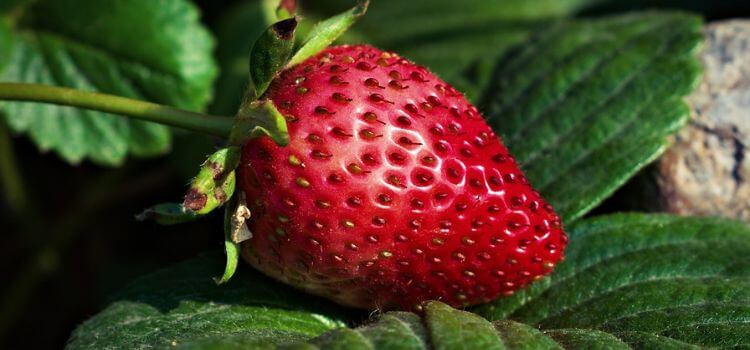As an Amazon Associate, I earn from qualifying purchases.
Your snake plant leaf may fall over due to overwatering or inadequate support. Poor lighting conditions can also contribute to this issue.
Snake plants require special care right from the outset since these hardy specimens are famous for their resilience and minimal care requirements. They blossom under indirect sunlight and require infrequent watering, making them favorites for both seasoned and novice plant lovers.
Ensuring they have the correct soil type, which provides ample drainage, can prevent the common problem of droopy leaves. Consistently monitoring water intake and lighting conditions will keep your snake plant upright and healthy. By providing a stable environment, you’ll likely see an improvement in your plant’s posture, promoting growth and longevity.
Growth Patterns Of Snake Plants
Snake plants, known as Sansevieria or “Mother-in-Law’s Tongue,” grow upright. Their sword-like leaves spring from the soil, reaching for the sky. Over time, these leaves grow taller and can develop a slight curve at the top.
- Vertical growth: Leaves start small and grow upwards.
- Curving characteristic: Older leaves may curl a bit at the top.
- Dense clusters: Leaves tend to grow close together.

Why is My Snake Plant Leaf Falling Over?
Several factors can lead to a snake plant’s leaves falling over. Identifying these can prevent future toppling. Let’s discuss some of the most common causes:
Table to summarize common causes
| Reason | Explanation |
|---|---|
| Overwatering | Leaves soak up too much water, get heavy, and droop. |
| Poor lighting | Not enough light makes leaves grow weak and limp. |
| Rotting roots | Damaged roots fail to support the plant’s weight. |
| Oversize pot | A pot that is too big can cause slow-drying soil and root issues. |
Other causes:
- Pest infestations weaken the leaves from within.
- Nutrient deficiencies can cause poor leaf health and structure.
- Physical damage or trauma can also lead to fallen leaves.
Underwatering Or Overwatering
Is your snake plant looking less than perfect? The problem may lie in water, the essence of life. Too much or too little water can tip the scales. Your snake plant thrives on a delicate balance, and understanding the nuances of watering can rescue a drooping leaf.
Signs Of Water Stress In Snake Plants
Water stress can look a lot like neglect, but it’s fixable. Here’s how to spot the telltale signs:
- Leaves falling over A clear cry for help.
- Crispy or soggy texture: Not the ideal feel for a healthy plant.
- Slow growth: It’s more than just being lazy. It needs correct water.
- Yellowing or browning: Colors that don’t belong on your snake plant.
Correct Watering Techniques For A Healthy Snake Plant
Affording your snake plant the right amount of water is akin to making a fine dish. Here’s the recipe:
| Step | Action |
|---|---|
| 1. Check the soil | Insert a finger 2 inches deep to feel the moisture level. |
| 2. Water thoroughly | Pour water evenly until it drains from the bottom. |
| 3. Wait for dry-out | Allow soil to dry almost completely before the next watering. |
| 4. Repeat with care | Follow this cadence, adjusting with seasons and temperature. |
Note: Always use room temperature water, and avoid letting your plant sit in water as it can cause root rot.

Soil And Pot Troubles
Sometimes, the issue with a snake plant’s stability could be more apparent. Factors like soil condition and pot choice often slip under the radar, quietly impacting a plant’s health. It’s time to uncover these hidden foes and reinstate your snake plant’s vigor.
Evaluating Soil Condition And Drainage
The right soil mix is crucial for snake plants. It ensures roots get the balance they crave. Here’s how to evaluate the soil:
- Check soil moisture: If it’s soggy, drainage may be poor.
- Assess soil texture: It should be loose and crumbly, not compact.
- Observe water flow: Water should seep out of drainage holes quickly.
Good drainage is vital. It prevents root rot, which could topple your plant. Make sure the pot has adequate drainage holes. For better water flow, consider a mix with perlite or sand.
The Impact Of Pot Size And Material On Plant Stability
Selecting the correct pot can make a world of difference:
- Size matters: A pot that is too small or too large can affect stability.
- Weight distribution: A heavier pot offers more support.
- Material Insights: Porous materials like terracotta allow soil to dry out faster.
Consider the size and weight of your pot carefully. A pot that’s too top-heavy or doesn’t align with the plant’s size can cause tipping. A stable material, like ceramic or terracotta, could be the secret to upright leaves.
Light Exposure
Finding the Sweet Spot is vital to a healthy snake plant. If your snake plant leaf is falling over, it may scream for better light conditions.
Understanding Your Snake Plant’s Light Requirements
Snake plants prefer indirect sunlight.
Too much sunlight can burn the leaves, causing them to fall over.
They can survive in low light but at a cost to their growth and form.
A balance is vital. Aim for bright, indirect light for most of the day.
Adjusting Your Plant’s Location For Optimal Growth
- East-facing windows provide gentle morning sunlight.
- With south or west-facing windows, utilize sheer curtains.
- Shift the plant 3-6 feet away from strong light sources.
- Consider rotating the plant regularly for even light distribution.
Be attentive to the plant’s response when you change its place.
Healthy growth will indicate the perfect spot.
Adjust as needed with the seasons since light changes.
Pest Invasion
Your snake plant is a trooper known for its resilience and striking, upright leaves. But, sometimes, even the most demanding plants fall victim to tiny, stealthy assailants. Pests can wreak havoc unseen, causing your snake plant’s leaves to fall over unexpectedly. Let’s unmask these silent leaf saboteurs and safeguard your snake plant.
Identifying Common Pests In Snake Plants
Snake plants are not pest magnets, but they can still get infected. Common culprits include:
- Spider Mites: Look for delicate webs and yellow or brown spots on leaves.
- Mealybugs: White, cottony masses hiding in leaf crevices spell trouble.
- Fungus Gnats: Tiny, dark-colored flies around the soil surface are a bad sign.
- Thrips: They bring silvery streaks and discolored patches on leaves.
These pests drain your plant’s life, causing leaves to sag or fall over. It is vital to quickly identify them.
Implementing Effective Pest Control Measures
Action is essential once you spot these invaders. Here’s what you can do:
- Clean the Leaves: Wipe with a soft, damp cloth to remove pests.
- Isolate the Plant: Keep it away from others to prevent spread.
- Use Insecticidal Soap: Spray it on affected areas to kill pests.
- Natural Predators: Introduce beneficial insects like ladybugs.
- Neem Oil: An organic option that disrupts the pest’s life cycle.
Consistency is crucial. Repeat treatments weekly until the pests are gone. Your snake plant will stand tall once again.

Revitalizing the Snake Plant
Is your snake plant starting to droop or lean? This can be a sign of distress. But don’t worry—there are effective ways to restore your plant’s upright, perky stance. Let’s learn how to regain your snake plant’s former vitality.
Practical Steps To Restore A Leaning Snake Plant
Here’s what to do when your snake plant’s leaves start falling over:
- Check the roots. Overwatering can lead to root rot. Healthy roots are essential.
- Stabilize the soil. Make sure it’s well-draining and supportive.
- Right the lean. Gently push the leaning leaf back to an upright position.
- Provide support. Use a stake or tie if necessary.
- Water correctly. Only when the soil is dry to the touch.
- Consider repotting. If the plant is too big or the soil is exhausted.
Long-term Care Strategies For Plant Stability
For ongoing maintenance, remember these tips:
- Light exposure. Ensure the plant gets indirect sunlight.
- Water schedule. Stick to a regular watering pattern.
- Soil check. Use well-draining soil and occasionally fertilize.
- Pot size matters. Ensure the pot allows room for growth.
- Monitor regularly. Keep an eye on any changes in your plant’s condition.
Following these steps will ensure that your snake plant stands tall and healthy for years.
Frequently Asked Questions Of Why Is My Snake Plant Leaf Falling Over
Trim any damaged leaves using clean shears. Ensure the pot has proper drainage to prevent root rot. Water moderately when the soil is dry and provides indirect light. Stabilize the plant with staking if necessary. Avoid overwatering and extreme temperatures to prevent leaves from falling over.
Snake plant leaves may become floppy due to overwatering, poor drainage, or insufficient light. To address these issues, adjust care routines accordingly.
To help snake plant leaves stand upright, ensure adequate light, proper watering, and a suitable pot size. If necessary, support with stakes. Avoid overwatering to prevent root rot, which can cause drooping leaves.
Check for yellowing leaves, soft/mushy bases, or soggy soil to determine if your snake plant is overwatered. Drooping leaves can also indicate excess water.
Conclusion: Why is My Snake Plant Leaf Falling Over?
Caring for a snake plant is generally straightforward, yet sometimes issues arise. If you notice your snake plant’s leaf drooping, it’s a sign to evaluate its environment and care routine. Regularly check for proper soil moisture and lighting conditions and apply timely interventions.
Addressing these key factors can restore your plant’s upright, healthy posture, ensuring its longevity and your continued enjoyment of its striking appearance. Embrace these tips, and your snake plant will thrive.


